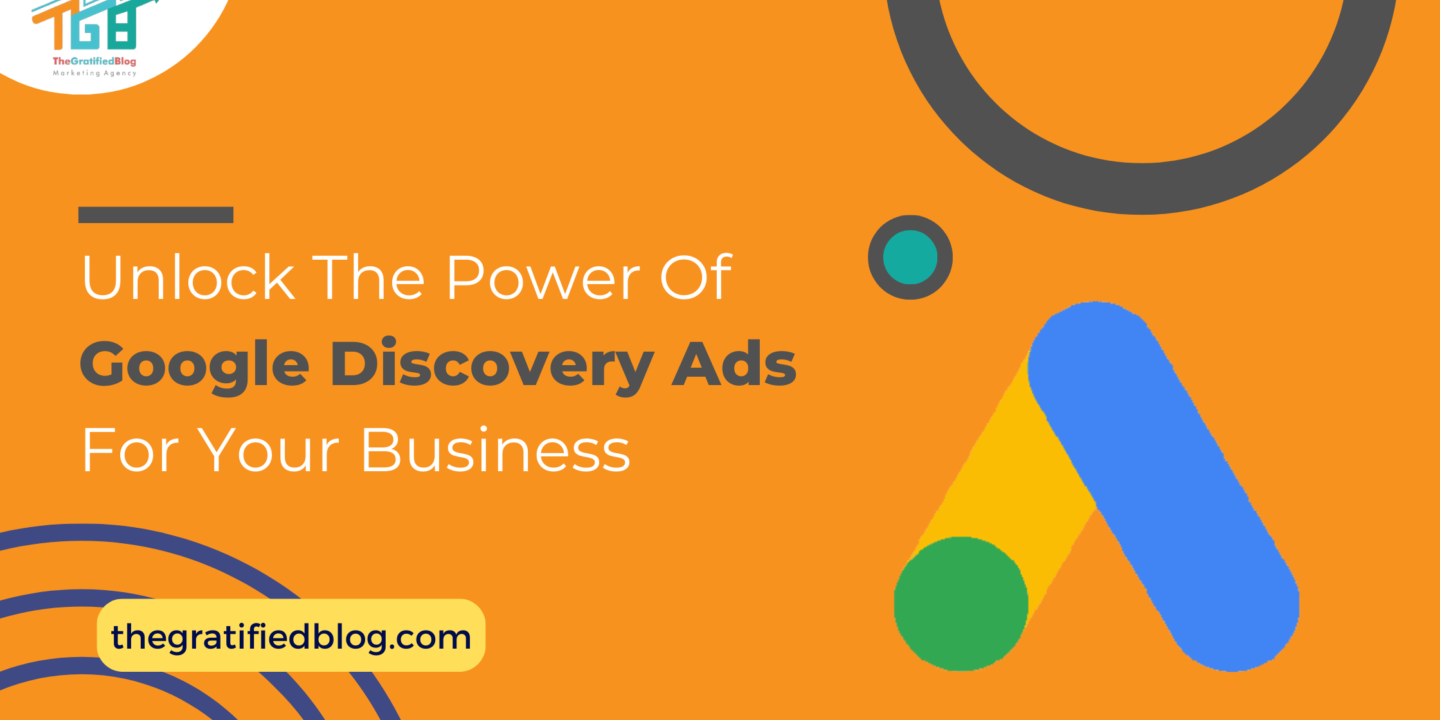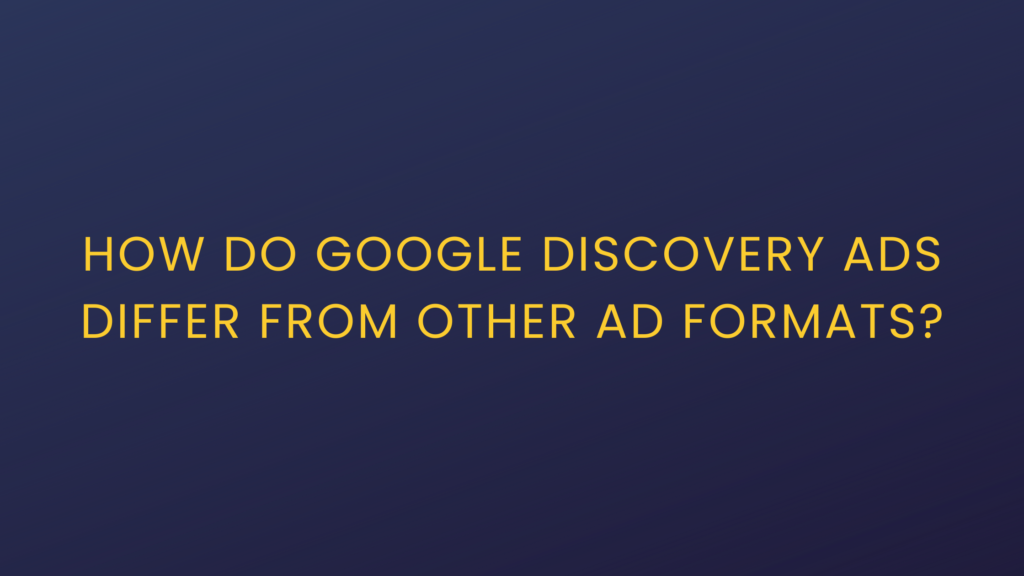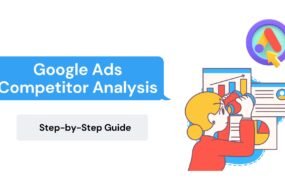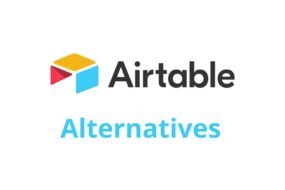
Maintaining a competitive edge is crucial and paramount in the ever-evolving digital marketing landscape. One such innovation that has revolutionised the advertising landscape is Google Discovery Ads. Harnessing the prowess of Google’s extensive network and user insights, Google Discovery Ads have emerged as a formidable tool for marketers seeking to captivate audiences across various touchpoints.
In this comprehensive guide, we delve deep into the world of Google Discovery Ads, unravelling their intricacies, exploring their functionalities, and unveiling strategies for maximising their potential.
Regardless of whether you’re an experienced marketer or just beginning to explore the field, digital advertising, understanding and mastering Google Discovery Ads can significantly elevate your marketing endeavours.
So, let’s embark on this enlightening journey to unleash the full potential of Google Discovery Ads and propel your brand towards unprecedented success.
What Are Google Discovery Ads?
Google Discovery Ads is a native advertising format offered by Google, designed to reach users across various Google-owned platforms and partner sites. These ads seamlessly integrate with the user experience, appearing within feeds and content streams where users engage with relevant content. Google Discovery Ads leverage the power of machine learning and user data to deliver highly personalised and engaging experiences to audiences.
Unlike traditional search or display ads, which appear primarily on search engine results pages or designated ad spaces on websites, Google Discovery Ads are strategically positioned within feeds on platforms such as the Google Discover feed, YouTube, and Gmail. This placement allows advertisers to reach users when they are actively exploring new content, making them more receptive to discovering and engaging with brands.
Benefits Of Google Discovery Ads

- Increased Brand Visibility: Google Discovery Ads enable advertisers to expand their brand’s visibility and reach by appearing in users’ feeds alongside relevant content. This increased exposure helps to raise brand awareness and familiarity among target audiences, driving consideration and preference for the brand.
- Enhanced User Engagement: With their visually appealing creative formats and contextually relevant placements, Google Discovery Ads are exceptionally adept at grabbing users’ attention and fostering engagement. By delivering ads in moments of discovery, when users actively explore new content, Google Discovery Ads encourage interaction and interaction with advertisers’ brands.
- Improved Targeting Accuracy: Google Discovery Ads offers advanced targeting options that enable advertisers to reach particular audiences precisely. By directing ads towards users according to their interests, behaviours, and demographics, advertisers can ensure their Ads are displayed to the most pertinent audiences, thereby enhancing the likelihood of driving conversions and sales.
- Optimised Campaign Performance: Using machine learning algorithms and continuous optimisation, Google Discovery Ads deliver improved campaign performance over time. By automatically adjusting targeting parameters, bidding strategies, and creative elements based on real-time data and user feedback, Google Discovery Ads drive better results for advertisers and ensure maximum return on investment.
Now, let’s understand how Google Discovery ads differ from other forms of Google advertising.
How Do Google Discovery Ads Differ From Other Ad Formats?

- Placement: While traditional search and display ads rely on specific placements within search engine results or web pages, Google Discovery Ads are positioned within feeds where users consume content. This placement allows for a more organic ad integration into the user experience, increasing the likelihood of engagement.
- Targeting: Google Discovery Ads leverage advanced targeting capabilities, including audience targeting based on user interests, behaviours, and demographics. This allows advertisers to reach highly relevant audiences that are more likely to be interested in their products or services.
- Creative Elements: Unlike text-based search or static display ads, Google Discovery Ads offer more dynamic and visually appealing creative elements. Advertisers can incorporate images, videos, and carousel formats to create immersive ad experiences that capture users’ attention and drive engagement.
- Engagement: Google Discovery Ads are designed to encourage user interaction and engagement. Users can swipe, scroll, and tap on ads within feeds to explore additional content or take intended actions, such as browsing a website or purchasing.
- Performance Tracking: Google Discovery Ads provide robust performance tracking and measurement capabilities, allowing advertisers to monitor essential metrics like impressions, clicks, and conversions. This information empowers advertisers to refine their campaigns for optimal maximum effectiveness and return on investment.
Now that we’ve explored the distinctions between Google Discovery Ads and other ad formats let’s delve into a step-by-step guide to creating these ads.
A Step-By-Step Guide To Creating A Google Discovery Ads Campaign

Creating a Google Discovery Ads campaign involves several steps to ensure your ads are effectively targeted, optimised, and launched. Below is a comprehensive step-by-step guide:
Step 1: Sign In To Google Ads
Log in to your Google Ads account. If you don’t have one, you’ll need to create one by visiting ads.google.com and following the prompts to set up your account.
Step 2: Navigate To Campaign Creation
After logging in, proceed to your Google Ads dashboard’s “Campaigns” section. Then, select the blue “+” icon to initiate creating a new campaign.
Step 3: Choose The Campaign Goal
Google Ads will walk you through the process of selecting a campaign objective. For Google Discovery Ads, you’ll typically choose the “Sales,” “Leads,” or “Website Traffic” goal, depending on your specific marketing objectives.
Step 4: Select Campaign Type
Choose “Discovery” as the campaign type in the campaign setup process. This indicates you want to create a campaign specifically for Google Discovery Ads.
Step 5: Configure Campaign Settings
- Campaign Name: Enter a descriptive name for your campaign to quickly identify it within your Google Ads account.
- Locations and Languages: Specify the geographic locations and languages you want to target with your ads.
- Budget and Bidding: Set your daily budget and select a bidding strategy. Google Ads offers various bidding strategies, including manual CPC (cost-per-click) or automated bidding options like target CPA (cost-per-acquisition) or maximise conversions.
- Start and End Dates: Choose your campaign’s start and end dates, or leave it open-ended if you don’t have specific timing requirements.
- Campaign URL options: Decide whether you want to use the final URL from your ad or set a tracking template for advanced tracking purposes.
Step 6: Define Audience Targeting
- Audience Targeting: Specify your target audience by considering demographics, interests, behaviours, and remarketing lists. You can create custom audience segments or use Google’s predefined audience categories.
- Custom Audiences: If you have existing customer lists or remarketing audiences, you can upload them to Google Ads for targeting purposes.
Step 7: Set Up Ad Group
- Ad Group Name: Enter a descriptive name for your ad group to identify it within the campaign.
- Bidding: Choose the bidding strategy for your ad group, considering your campaign objectives and budget constraints.
Step 8: Create Ad Assets
- Headlines: Write compelling headlines that grab users’ attention and accurately represent your offering.
- Images or Videos: Select visually appealing images or videos highlighting your products or services. Make sure they meet Google’s ad specifications for size and format.
- Descriptions: Craft concise, persuasive descriptions that provide additional context or incentives for users to engage with your ad.
Step 9: Review And Launch Campaign
Before launching your campaign, review all settings, targeting options, and ad creatives to ensure everything is set up correctly. Once satisfied, click the “Save and Continue” button to launch your Google Discovery Ads campaign.
Step 10: Monitor And Optimize Performance
Following the launch of your campaign, consistently monitor its performance utilising Google Ads reporting tools. Take note of important metrics such as impressions, clicks, click-through rate (CTR), and conversions. Use this data to identify areas for optimisation and make adjustments to improve campaign effectiveness over time. This may include refining audience targeting, adjusting bids, or optimising ad creatives based on performance insights.
By following these steps, you can create a successful Google Discovery Ads campaign that effectively reaches your intended audience and generates significant outcomes for your business.
Now, let’s examine strategies for optimising ad content and creative elements and the best practices for budgeting and bidding strategies.
Tips For Optimizing Ad Content And Creative Elements

- Visual Appeal: One of the most crucial aspects of optimising ad content for Google Discovery Ads is prioritising visual appeal. Utilise visually appealing high-quality images and videos that are striking and relevant to your brand and message. Ensure that your creative elements are attention-grabbing and convey your value proposition effectively. Experiment with different creative formats, such as carousel ads or immersive storytelling techniques, to engage users and encourage interaction with your ads.
- Relevance and Personalization: To maximise the effectiveness of your Google Discovery Ads, focus on delivering relevant and personalised content to your target audience. Leverage the advanced targeting options to tailor your ad content to your audience segments’ interests, behaviours, and preferences. Incorporate dynamic ad copy and imagery that resonates with different audience segments, addressing their unique needs and pain points. By delivering personalised ad experiences, you can increase engagement and drive better campaign results.
- Clear Call-to-Action (CTA): An explicit and compelling call-to-action (CTA) is vital for guiding users towards the desired action after interacting with your Google Discovery Ads. Whether you want users to visit your website, purchase, or sign up for a newsletter, ensure your CTA is prominently displayed and easily understood. Use actionable language and persuasive messaging to encourage users to take the next step. Test different CTAs and placement options to determine what connects most effectively with your audience and motivates the desired outcomes.
Best Practices For Budgeting And Bidding Strategies

- Start with a Test Budget: When launching a new Google Discovery Ads campaign, a test budget is essential to gauge performance and optimise accordingly. Begin with a conservative budget that allows you to gather sufficient data and insights without overspending. Track crucial metrics like click-through rate (CTR), conversion rate, and return on investment ad spend (ROAS) to assess the effectiveness of your campaign and make informed decisions about budget allocation.
- Utilise Automated Bidding Strategies: Google offers a range of automated bidding strategies that can help optimise your bidding process and maximise campaign performance. Consider using bidding strategies such as target CPA (cost-per-acquisition) or target ROAS (return on ad spend) to automatically modify your bids according to your performance goals. These automated bidding strategies leverage machine learning algorithms to optimise bids in real-time, ensuring you get the most value out of your advertising budget while achieving your desired outcomes.
- Monitor and Adjust Campaign Settings: Regularly monitor your Google Discovery Ads campaign performance and adjust your budget and bidding strategies.
Stay vigilant regarding crucial performance indicators such as ad impressions, click-through rates, and conversion rates to identify areas for improvement and optimisation. Test different bidding strategies, ad formats, and targeting options to discover the ideal combination that achieves the best results for your campaign objectives. By continuously monitoring and adjusting your campaign settings, you can improve the efficiency and effectiveness of your Google Discovery Ads campaigns.
Google Discovery Ads Example
Gmail Feed
Discovery ads may also appear within Gmail, typically in the “Promotions” or “Social” tabs. Upon encountering these ads, clicking on them will prompt an email-like interface, revealing further details about the brand’s offer, as depicted below.
YouTube Home Feed
You can also encounter Discovery ads within the YouTube app, often visible while scrolling through the “Home” tab. These ads are recognisable by the yellow “Ad” indicator and are similar to the examples shown below.
Conclusion
Now that you possess an in-depth comprehension of Google Discovery Ads, it’s time to leverage this knowledge to elevate your digital marketing strategies. You can successfully connect and interact with your target audience across various touchpoints by harnessing the power of Google Discovery Ads’ seamless integration, advanced targeting options, and engaging creative formats. Ensure that you monitor and optimise your campaigns consistently.
If you still have any questions related to the blog, please leave them in the comments section. We will be happy to answer you.
Thanks for reading 🙂








No Comments